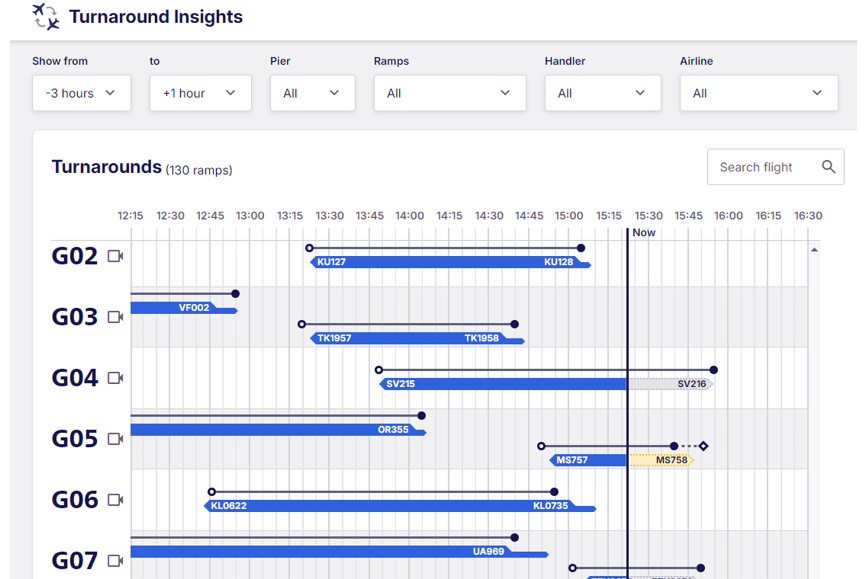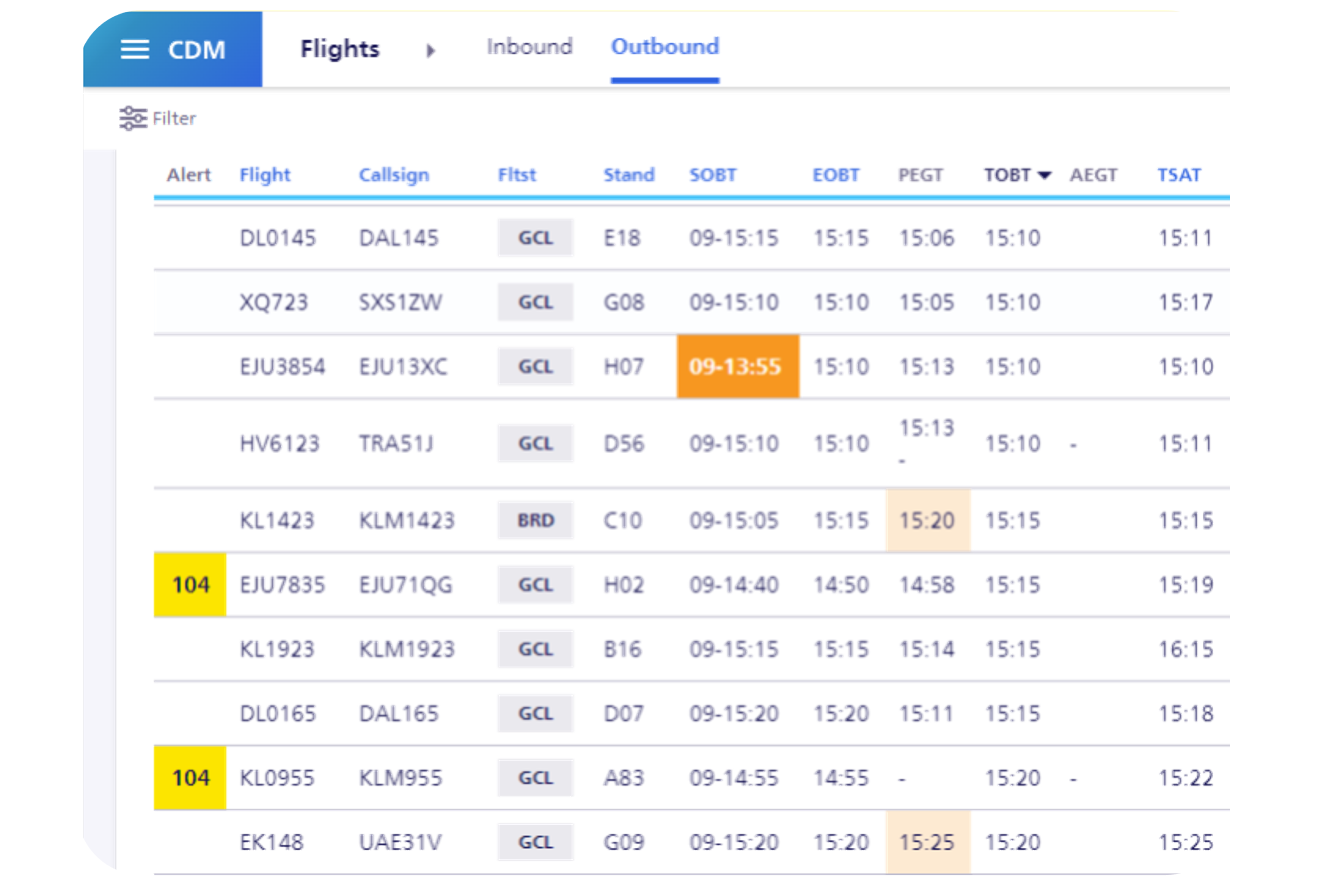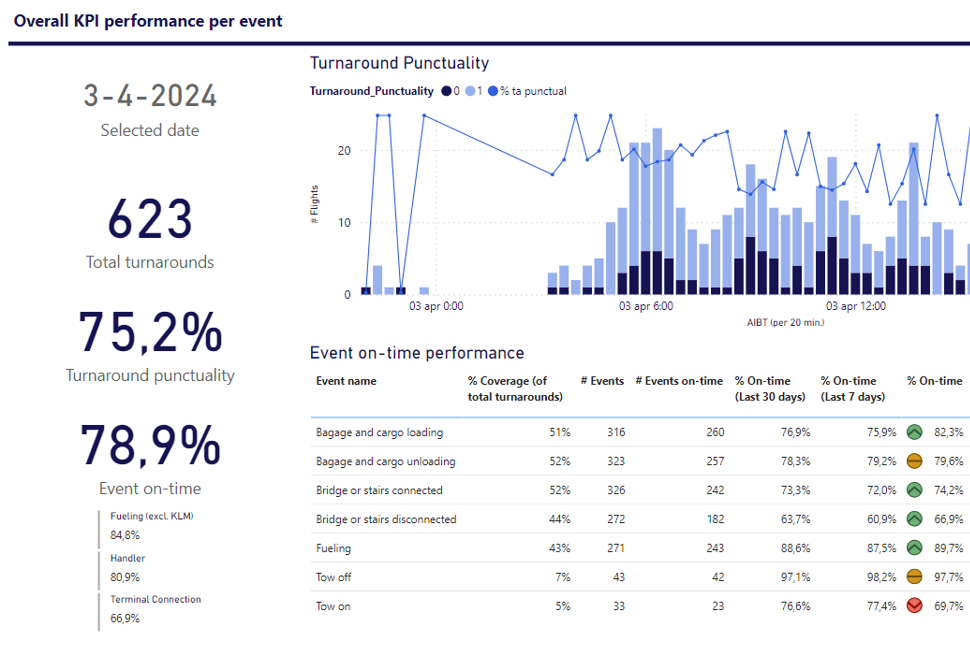Trusted by airlines, airports and stakeholders












Deep Turnaround helps airports improve the aircraft turnaround processes based on historic, real-time and predictive insights. Using AI image-based processing, the Deep Turnaround algorithm detects and reports over 70 unique turnaround events in 30 turnaround processes. It detects delays as early as 40 minutes before the targeted off-block-time, and helps to make informed decisions.
Deep Turnaround gives insight into what before was a blind-spot in data. Historical insights provide the opportunity to change processes structurally.
Based on over 150.000 turnarounds , Deep Turnaround’s predictive capabilities detect delays before anyone else can.
Effective communication is key for effective airport processes. Objective turnaround data facilitates a base for constructive discussion and cooperation.












The turnaround process, at the heart of airport processes and yet a blind spot in terms of insight. Every day, this is causing delays, capacity inefficiencies and posing challenges in collaboration with sector partners.
At most airports, between 40-50% of delays occur during the turnaround process. Delays usually lead to more delays: delays in the turnaround of one aircraft can lead to a last-minute gate change for another, which again could cause delays in ground handling leading to a missed runway slot. Throughout this process, there is a lot of misalignment between all involved sector partners, with different perspectives of the truth.
Improve asset & resource management
Reduce last-minute gate changes
Reduce carbon emissions through APU detection
Improve passenger information (e.g. on baggage)
Accelerate the journey towards total airport management
Optimise runway slot usage by better TOBT setting
Improve turnaround processes
OTP improvement
Transparency on turnaround KPI’s
Once Deep Turnaround is implemented, it opens up many possibilities, here are a few.

Identify the causes of turnaround delays
Includes over 70 turnaround events
Reduce turnaround delays by up to 30%
Improve passenger experiences
Used by airports, airlines and ground handlers
Increase certainty of actual push back time
Reduce buffer times between planes
Increase stand utilisation due to higher capacity
Increase airport resilience by reallocating time gained to late arrivals
Improve long-term gate planning and investments in stands


Set transparent and objective KPI’s in SLA’s
Create accountability and match performance and reward
Transparency on delay code registration
Increase OTP of manageable delays
Insights generated by Deep Turnaround are conveniently made available to you through a dashboard and/or a data stream. We offer three type of packages of our Deep Turnaround solution:
Immediate insights
Web-based & mobile interface
Engages all stakeholders

Insights available via operational tools and technology
Act on real-time data in existing tools
Increased operational adoption

Define turnaround KPIs and metrics
Resolve root-causes of delays
Create custom reports


The turnaround process used to be a black box. With Deep Turnaround, we generate the necessary data and insights. By looking at the same transparent, real-time and historical data with all our partners, we can collaborate to focus even more closely on efficient planning and execution with a better OTP as a result. And ultimately, a higher customer satisfaction.Frédérique Portheine – Manager Operational Excellence – Eindhoven Airport

Finally, we have an accurate overview of the turnaround process. This allows us to optimise day-planning, and it makes it a lot easier to remotely change or set an accurate TOBT (Target Off-Block Time). In turn, this improves the information provision towards the airport and Air Traffic Control.Wouter van der Voort, Lead Coördination Schiphol, Viggo (Ground Handling)

Deep Turnaround gives us invaluable insights for operational decision making; improving performance and predictability on a daily basis.Jeffrey Schäfer, Process Owner Aircraft Turnaround at Amsterdam Airport Schiphol
Download the brochure which includes most information that you can find on this website. Use it to involve stakeholders, share it digitally or print a version to share with team members.